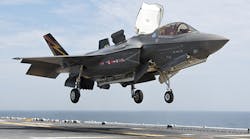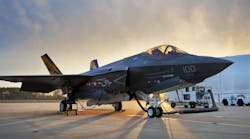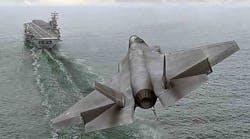Against a backdrop of anxiety stemming from a revival of some Cold War-era military tensions, plus uncertainty following the U.S. presidential election, and recent controversies concerning the overruns of critical U.S. defense programs, Lockheed Martin chairman Marilyn Hewson spoke to a NATO industry forum to stress the importance of a strong “defense-industrial base.”
Hewson, who also is president and CEO of the Bethesda, Md.-based defense manufacturer, highlighted the importance of R&D investments, the advantages of interoperable technologies, and the need to build a pipeline of science, technology, engineering and math (i.e., STEM) talent.
NATO, the North Atlantic Treaty Organization, is an intergovernmental military alliance founded in 1949 and now comprising 28 nations, including the United States and Canada, the United Kingdom, France, Germany, Italy, and most of the nations of Western, Central, Eastern, and Southern Europe. During most of its history, NATO presented the coordinated counter-threat to the Soviet Union.
In recent years, NATO has been used to coordinate allied responses to threats outside its home region, namely in Afghanistan, Iraq, and the Middle East.
“The strategic partnerships and deep relationships flowing from more than six decades of cooperation provide a strong foundation for taking on our 21st century challenges together,” Hewson stated.
Lockheed is one of three primary contractors of the F-35 Joint Strike Fighter, a defense program that is supported not only by the U.S. Dept. of Defense, but as well by defense ministries in the U.K. and several more NATO members. The F-35 has been significantly in excess of its planned development and implementation budget, and is typically described as “the most expensive U.S. weapons system ever.”
The F-35 program — which has delivered the first of three aircraft variants but continues to be in development for other versions — has been targeted for cost cuts by the Pentagon and Congressional watchdogs over the past three years. Earlier this month, DoD made it known it will need up to $530 million more than is currently budgeted to to finish the current phase of F-35 development, and that the Pentagon would begin advocating a restructuring of the program.
She argued that defense readiness built on advanced technology makes the NATO alliance “more flexible and better prepared to confront a wide range of modern threats.”
And, she continued: “However, to maintain operational readiness and create incentives for industry to pursue research and development, defense spending must be consistent and sustained.”
Hewson also stressed that NATO members’ geopolitical and budgetary challenges can be address by expanding “interoperability,” the technical and strategic term for information-, resource-, and risk-sharing.
The Lockheed chairman stressed that interoperability and collaboration can be enhanced by reforming NATO’s procurement process to emphasize joint program development “within the context of stable investment,” allowing defense contractors to plan farther in advance, which would strengthen long-term partnerships and help achieve economies of scale.
Hewson’s final emphasis was on improving skilled-workforce development, particularly by encouraging students to pursue STEM disciplines. “In summary, maintaining NATO’s technological leadership and capabilities will be critical to the future of the Alliance and to human progress,” she said.










